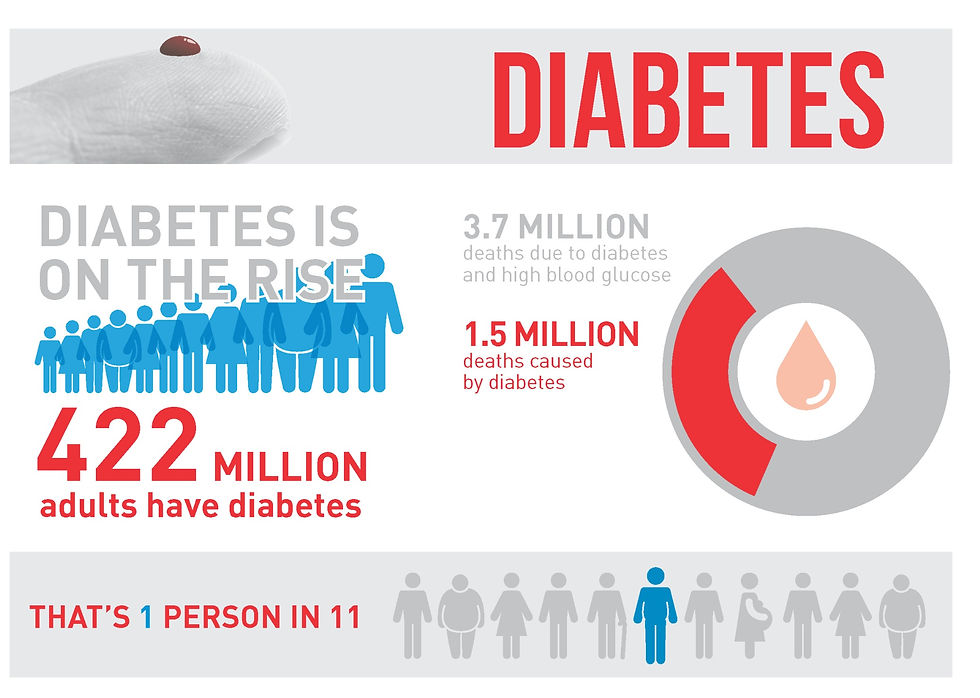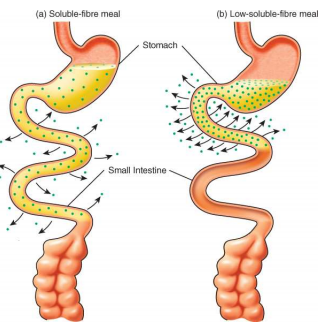Of Fiber and Diabetes
- thefoodscientistke
- Nov 2, 2020
- 3 min read
Non-communicable diseases account for about 73% of all deaths in the world. These are diseases that are not infectious, are mostly chronic and most of them are the direct result of our lifestyle and dietary habits. Of these diseases, cardiovascular disease is the leading cause; and diabetes is one of the precursors of heart diseases. Diabetes is a chronic metabolic disease, whereby the pancreas produces too little insulin or none at all, leading to high blood sugar/glucose which remains unregulated over time. The risk for the development of cardiovascular disease doubles for individuals with type 2 diabetes because if increased risk of damage to blood vessels.

According to the World Health Organization, about 422 million people in the world have diabetes, especially in low and middle-income countries. 1.6 million deaths every year are associated with diabetes. Out of these cases, 90% are type-2 diabetes. That means that almost all of these cases could have been prevented and can thus be managed through dietary and lifestyle changes.
Right before the development of diabetes is a stage called pre-diabetes, in which an individual's blood sugar is higher than normal, but not too high that it is considered diabetes. Failure to introduce lifestyle changes at this stage eventually results in diabetes. Measures to reduce the risk of developing diabetes even when one is at the prediabetes level have to do with being physically active and using diet to induce a metabolic reset.
However, in this post, I want to talk about how fiber plays into the prevention and management of diabetes.
Fiber
Dietary fiber refers to plant based carbohydrate that does not undergo digestion in the small intestines. Most of the absorption of nutrients take place in the small intestines. Fiber, however, gets to the large intestines undigested. Of this fiber, some is soluble and some is insoluble fiber. Insoluble fiber is necessary for promoting gastrointestinal motility and reducing the risk of constipation. Sources of insoluble fiber include whole grains, vegetables like green beans and cauliflower, other types of beans and nuts.
Soluble fiber, on the other hand, undergoes fermentation in the colon, breaking into short-chain fatty acids that are then absorbed into the blood stream. The sources of soluble fiber include lentils, citrus fruits, carrots, beans, and peas. Generally, most plants have both these types of fiber, and people should generally consume more plant-based foods to increase their fiber intake.
The process by which the GI deals with fiber takes sometime because fiber is quite bulky. As a result, the body absorbs sugar slowly, and does not overwhelm the blood with too much sugar. This is the main way the consumption of fiber prevents diabetes and reverses the pre-diabetes condition. Moreover, eating foods high in fiber leaves someone feeling fuller for much longer, thus reducing the tendency to consume too much sugar and giving in to cravings. The slow absorption of fiber is especially important in the prevention of insulin resistance which is a key symptom of diabetes. Insulin resistance is a condition where the muscles of the body and the liver cannot take up excess blood sugar even in the presence of insulin. In the long run, the pancreas becomes exhausted and starts to produce less insulin even when the blood glucose levels are high.

In a Nutshell...
Fiber helps individuals avoid the spikes in glucose levels in the blood that keep the pancreas producing insulin, helping people become insulin sensitive.
Diabetes results when your blood is overwhelmed by too much glucose that goes unregulated. Thus, anything that keeps your blood sugar levels from spiking is worth exploring. And fiber does exactly that
Resources
Diabetes https://www.who.int/health-topics/diabetes#tab=tab_1
Causes of Death by Hannah Ritchie and Max Roser https://ourworldindata.org/causes-of-death
What’s the Difference Between Soluble and Insoluble Fiber https://www.healthline.com/health/soluble-vs-insoluble-fiber








This information is very useful and curated for an easy read.
Does pre-diabetes definitely lead to full blown diabetes?